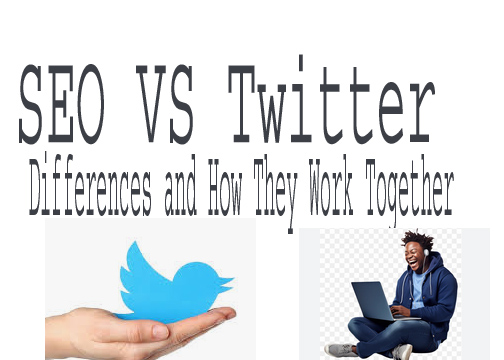In the realm of digital marketing, SEO (Search Engine Optimization) and Twitter represent two distinct yet complementary strategies. While SEO focuses on enhancing a website’s visibility on search engines like Google, Twitter, a social media platform, provides real-time communication, engagement, and content sharing. Businesses often wonder which of the two is more effective or how they can work together to maximize online presence. This article will dive into the differences between SEO and Twitter, as well as how they can complement each other to drive digital success.
1. What Is SEO?
SEO is the practice of optimizing a website’s content, structure, and overall presence to rank higher on search engine results pages (SERPs). The goal is to drive organic (non-paid) traffic from search engines by improving factors such as:- Keyword optimization
- High-quality content
- Website structure and speed
- Backlinks
- User experience (UX)
2. What Is Twitter?
Twitter is a popular social media platform that allows users to post short messages (tweets) of up to 280 characters. It is known for its fast-paced, real-time nature, making it ideal for staying up-to-date with trends, engaging with an audience, and promoting content. Businesses use Twitter to build brand awareness, interact with customers, and share timely updates, often amplifying content created on other platforms like their website.3. Key Differences Between SEO and Twitter
- Content Longevity:
- SEO: Content optimized for SEO, such as blog posts or landing pages, is evergreen. Once it ranks on search engines, it can continue to drive traffic over time, as long as the content remains relevant and updated.
- Twitter: Tweets have a shorter lifespan. Although content can go viral, most tweets only capture attention for a brief window—typically a few hours or days—before they get buried under the constant flow of new tweets.
- Traffic Type:
- SEO: SEO generates organic traffic from search engines. This traffic is highly valuable because users actively search for specific terms, making them more likely to convert.
- Twitter: Twitter attracts social traffic, driven by engagement, likes, shares, and retweets. This type of traffic is generally more casual and spontaneous, but it can be effective for real-time engagement.
- Audience Intent:
- SEO: With SEO, visitors land on your site because they are searching for something specific, which means their intent is often higher. They might be looking for information, products, or services.
- Twitter: On Twitter, the interaction is less intent-driven. People use the platform for news, entertainment, and social interaction, which means they may not be actively searching for what your business offers.
- Algorithm Focus:
- SEO: SEO relies on search engine algorithms that evaluate keyword relevance, backlinks, and on-page optimization to rank content.
- Twitter: Twitter uses its own algorithm that favors engagement metrics like retweets, likes, and replies to boost content visibility.
4. How SEO and Twitter Can Work Together
Though SEO and Twitter are different in approach, combining them can help create a powerful digital marketing strategy. Here's how they can complement each other:- Boosting Content Visibility: Tweets that link to SEO-optimized content can drive social traffic to your website. When a post gains traction on Twitter, it generates social signals (likes, shares) that can indirectly contribute to SEO by increasing user engagement and brand awareness. For example, a well-timed tweet about a blog post can bring more visitors to your site, which could increase the page’s time-on-site, a ranking factor in SEO.
- Social Sharing for Backlinks: While social media links don’t directly influence SEO rankings, Twitter can play a role in content distribution. When influential users or followers share your website content, it increases its exposure, and other sites may choose to link back to it. These backlinks can improve your website’s authority, a key SEO factor.
- Real-Time SEO Feedback: Twitter allows you to gauge real-time reactions to your content. If a specific topic or keyword starts trending on Twitter, it could signal a good opportunity for you to optimize new content around that keyword for SEO.
- Brand Awareness and Trust: Consistent and engaging Twitter activity can help build your brand’s authority. When users recognize your brand as a trusted source of information on Twitter, they are more likely to engage with your site, which can enhance your SEO over time.
5. Choosing Between SEO and Twitter: Which Is Better?
Choosing between SEO and Twitter depends on your business goals:- SEO is better if:
- You are focused on long-term traffic growth and want to rank higher on search engines.
- You aim to capture high-intent visitors who are more likely to convert into leads or sales.
- You want a strategy that works over time, providing a continuous flow of organic traffic.
- Twitter is better if:
- You want to engage with your audience in real-time, share timely updates, and build brand awareness.
- You’re looking to drive immediate but short-term traffic spikes.
- You need a platform for interacting with customers, providing quick responses, and participating in trending conversations.
